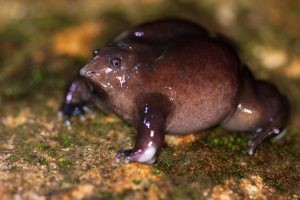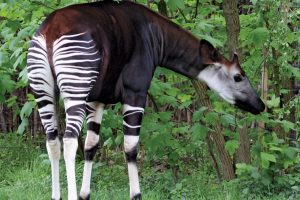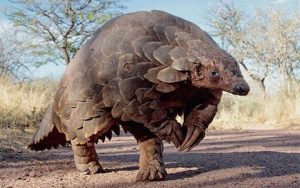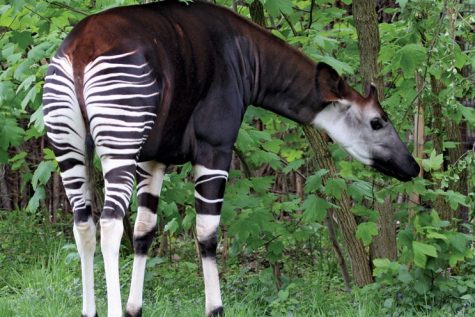Mammal of the Month: Pangolin

Credit: “MANIS TEMMINCKII” BY DAVID BROSSARD/ CC BY 2.0
A pangolin walks around, looking like a dinosaur.
October 25, 2018
Well here we are, two years later. Everyone’s favorite mammal-appreciation series returns for its third season, which means, fun fact: it’s older that the shelf life of canned applesauce. It’s true. For anyone new here, every issue Mammal of the Month provides information about the most underrated members of the class Mammalia. This year kicks off on a good note, with the pangolin.
Also called scaly anteaters, pangolins are actually a family, comprised of three genera: Manis, Phataginus, and Smutsia. Manis contains four species native to Asia, and the other two each contain two species native to Africa. The main difference between species is variance in size. As the nickname suggests, their diet is similar to that of an anteater, and includes almost nothing aside from termites and ants. Most pangolins are nocturnal and solitary mammals.
Visually, they are fascinating creatures. They’re roughly the size of an armadillo, and the two actually share certain characteristics but are not closely related. The pangolin is covered from head to tail in large, overlapping scales used as a defense mechanism against predators. These scales are uncommon in the animal kingdom, as they are made of keratin rather than bone, the material found in the armor of armadillos and most armoured reptiles, or exoskeletons. Pangolins are the only mammal into the world with this exact defense mechanism. When threatened, they roll up into a tight ball, taking up a “defensive position,” and just kind of sit there. This tends to be effective against predators.
There would be no reason for them to run, because aside from the fact that they have excellent armor, they are not especially fast. In fact, the most fascinating and downright important thing about the pangolin is their style of movement. They have a tendency to walk upright, on two legs. This is because their front paws host large claws, used for digging up insects, which can get in the way of walking. So the pangolin walks around looking like a hunched over, scheming cartoon villain. Their movement has also been compared to that of a T-Rex.
Unfortunately, pangolins are often illegally hunted and are the most trafficked mammals in the world. They’re hunted for food in Africa, and seen as a delicacy in parts of Southeast Asia.
Additionally, certain east Asian beliefs insist that pangolin scales can cure cancer. Pangolins were declared endangered in 2010, and now all species are categorized as being threatened with extinction. There have been boosted efforts since then in order to preserve the mammals, and the third Saturday of February has been dubbed “World Pangolin Day.”
Bonus fact: up until recently, Pangolins were thought be a part of the order Xenarthra, which also contains sloths, anteaters, and armadillos. Recently, however, they have been relocated into the clade Ferae thanks to DNA testing. Ferae contains the two orders, Carnivora and Pholidota (pangolins), meaning pangolins are more closely related to dogs than armadillo, despite their physical similarities to the latter.
Bonus bonus fact: In the 1800s, an armored shirt made of Pangolin scales was presented as a gift to King George III.
And those were all of the facts. Stay tuned for the next MOTM!





















